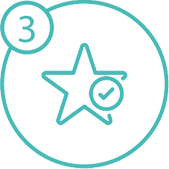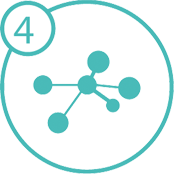うつと不安障害
うつ病は、世界中3億人以上に影響を及ぼしている。未治療のうつ病は、15〜29歳 の死亡原因の第2位の原因である、自殺につながる可能性がある。
人生の最初の年の慢性的なストレスと外傷は、うつ病の脆弱性と関連している。 遺伝的要因と環境的要因との複雑な相互作用が、この病気の病態生理に関与している。
効果的なケアに対する傷害として、以下のものが挙げられる。
リソース不足と訓練された保健人員
精神障害の不安定化
不正確、または誤った臨床評価
全ての種類の収入のある国では、うつ病をもつ人々は、度々正確に診断されず、その他の実際にうつ病でない人々は、度々誤診され、抗うつ剤で治療されることがある。
世界中で影響を受けた人々の半数以上が効果的な治療を受けておらず、病理学のより深い理解が必要である。
海馬、扁桃体、側坐核、線条体、内腔、内側視床、および前頭皮質の領域を含む、いくつかの脳領域が、うつ病の病因に関与している。
海馬および前頭前野の形成は、様々な認知機能を調節し、感情情報を処理するために双方向に相互作用する。 行動中に2つの領域間に強い神経同期があり、それらの機能的相互作用は振動によって調節される。 海馬の細胞および前頭前野の皮質によって形成された神経セットは、感情過程および認知過程の調節における回路と同様の様式で互いに影響を及ぼす。
海馬は、視床下部 - 下垂体 - 副腎系のストレス誘発調節不全に対する、中心的役割を果たす。
うつ病患者の画像検査では、海馬の体積の減少が示され、うつ病の脳構造の変化が最も頻繁に起こる。 前頭皮質の軽度ではあるが一貫した減少も報告されている。
視床下部 - 下垂体 - 副腎軸の調節不全に起因する、上昇したコルチコステロンのレベルは、大うつ病性障害を有する患者に起こる、海馬の収縮に寄与する因子として起因する。
特に事象関連電位の間の神経生理学的研究は、ケアタスク、言語記憶、及び感情過程の間に、前頭及び側頭領域における電圧又はパワーの著しい減少を示す。 この電圧不足は、記憶回路を活性化させる原因となるドーパミン作動性回路の活動低下、注意およびモチベーションに直接関係する。
したがって、うつ病へのアプローチは、最初に言及した回路および領域の変化を検出し、原因が異なる双極性障害および統合失調症などの他の疾患で観察されるような他のタイプのうつ病を区別することに焦点を当てるべきである。
大うつ病性障害を有する患者は、注意、情報処理、作業記憶、および執行機能の障害などの認知障害を頻繁に示す。 特定のサブグループでいくつかの異常が報告されているため、うつ病の患者全員に一様に存在していないことが強調されるべきである。
しかし、気分の改善にもかかわらず、これらの欠点が持続することは、認知機能障害がうつ病とどのように絡み合っているかを理解し、疾患のこの側面を特異的に標的とする治療を行う努力を必要とする。
参照
- Bradley M.M. Natural selective attention: orienting and emotion. Psychophysiology. 2009;46(1):1–11.
- Bradley M.M., Lang P.J. Measuring emotion: the self-assessment manikin and the semantic differential. J. Behav. Ther. Exp. Psychiatry. 1994;25(1):49–59.
- Bradley M.M., Lang P.J. The International Affective Picture System (IAPS) in the study of emotion and attention. In: Coan J.A., Allen J.J.B., editors. Handbook of Emotion Elicitation and Assessment. Oxford University Press; New York: 2007. pp. 29–46.
- Bradley M.M., Sabatinelli D., Lang P.J., Fitzsimmons J.R., King W., Desai P. Activation of the visual cortex in motivated attention. Behav. Neurosci. 2003;117(2):369–380.
- Bradley M.M., Hamby S., Löw A., Lang P.J. Brain potentials in perception: picture complexity and emotional arousal. Psychophysiology. 2007;44(3):364–373.
- Bruder G.E. Frontal and parietotemporal asymmetries in depressive disorders: behavioral, electrophysiologic and neuroimaging findings. In: Hugdahl K., Davidson R.J., editors. The Asymmetrical Brain. MIT Press; Cambridge, MA: 2003. pp. 719–742.
- Bruder G.E. Electrocortical responses to rewards and emotional stimuli as biomarkers of risk for depressive disorders. Am. J. Psychiatry. 2016;173(12):1163–1164.
- Bruder G.E., Fong R., Tenke C.E., Leite P., Towey J.P., Stewart J.E., McGrath P.J., Quitkin F.M. Regional brain asymmetries in major depression with or without an anxiety disorder: a quantitative electroencephalographic study. Biol. Psychiatry. 1997;41(9):939–948.
- Bruder G.E., Kayser J., Tenke C.E., Leite P., Schneier F.R., Stewart J.W., Quitkin F.M. Cognitive ERPs in depressive and anxiety disorders during tonal and phonetic oddball tasks. Clin. Electroencephalogr. 2002;33(3):119–124.
- Bruder G.E., Tenke C.E., Warner V., Nomura Y., Grillon C., Hille J., Leite P., Weissman M.M. Electroencephalographic measures of regional hemispheric activity in offspring at risk for depressive disorders. Biol. Psychiatry. 2005;57(4):328–335.
- Bruder G.E., Tenke C.E., Warner V., Weissman M.M. Grandchildren at high and low risk for depression differ in EEG measures of regional brain asymmetry. Biol. Psychiatry. 2007;62(11):1317–1323.
- Colgin LL. Oscillations and hippocampal-prefrontal synchrony. Curr Opin Neurobiol. 2011;21(3):467–474.
- Croxson PL, Johansen-Berg H, Behrens TE, et al. Quantitative investigation of connections of the prefrontal cortex in the human and macaque using probabilistic diffusion tractography. J Neurosci. 2005;25(39):8854–8866.
- Ferrari AJ, Charlson FJ, Norman RE, et al. Burden of depressive disorders by country, sex, age, and year: findings from the global burden of disease study 2010. PLoS Med. 2013;10(11):e1001547.
- Godsil BP, Kiss JP, Spedding M, Jay TM. The hippocampal-prefrontal pathway: the weak link in psychiatric disorders? Eur Neuropsychopharmacol. 2013;23(10):1165–1181.
- Gordon JA. Oscillations and hippocampal-prefrontal synchrony. Curr Opin Neurobiol. 2011;21(3):486–491.
- Hoover WB, Vertes RP. Anatomical analysis of afferent projections to the medial prefrontal cortex in the rat. Brain Struct Funct. 2007;212(2):149–179.
- Jay TM, Glowinski J, Thierry AM. Selectivity of the hippocampal projection to the prelimbic area of the prefrontal cortex in the rat. Brain Res. 1989;505(2):337–340.
- Maren S. Seeking a spotless mind: extinction, deconsolidation, and erasure of fear memory. Neuron. 2011;70(5):830–845.
- Preston AR, Eichenbaum H. Interplay of hippocampus and prefrontal cortex in memory. Curr Biol. 2013;23(17):R764–R773.
- Russo SJ, Nestler EJ. The brain reward circuitry in mood disorders. Nat Rev Neurosci. 2013;14(9):609–625.
- Thierry AM, Gioanni Y, Dégénétais E, Glowinski J. Hippocampo-prefrontal cortex pathway: anatomical and electrophysiological characteristics. Hippocampus. 2000;10(4):411–419.
- Varela C, Kumar S, Yang JY, Wilson MA. Anatomical substrates for direct interactions between hippocampus, medial prefrontal cortex, and the thalamic nucleus reuniens. Brain Struct Funct. 2014;219(3):911–929.
- Wolff M, Alcaraz F, Marchand AR, Coutureau E. Functional heterogeneity of the limbic thalamus: from hippocampal to cortical functions. Neurosci Biobehav Rev. 2015;54:120–130.
- World Health Organization."Depresión." Organización Mundial De La Salud.
- Zhong YM, Yukie M, Rockland KS. Distinctive morphology of hippocampal CA1 terminations in orbital and medial frontal cortex in macaque monkeys. Exp Brain Res. 2006;169(4):549–553.

 日本語 (Japan)
日本語 (Japan)  Español
Español  English
English 




